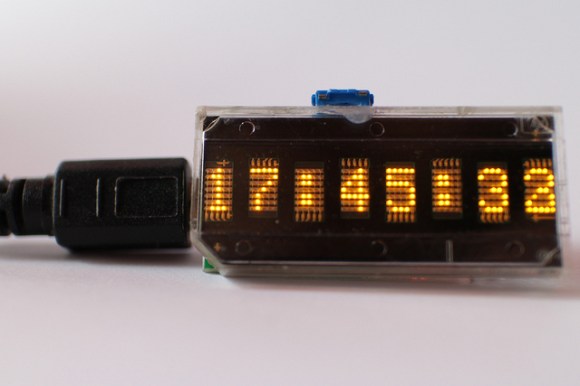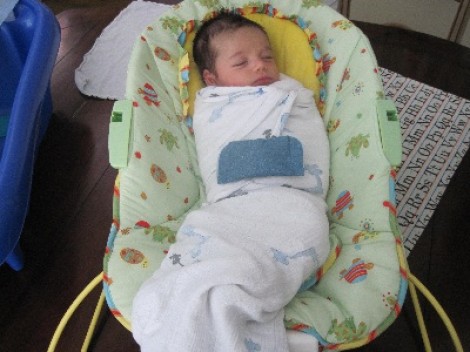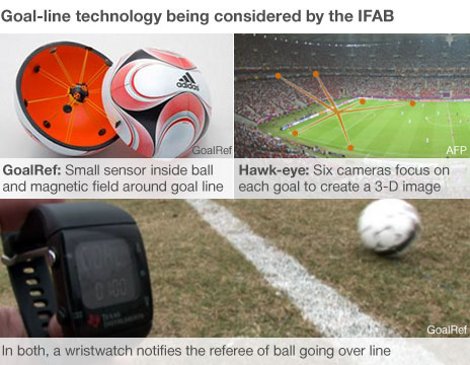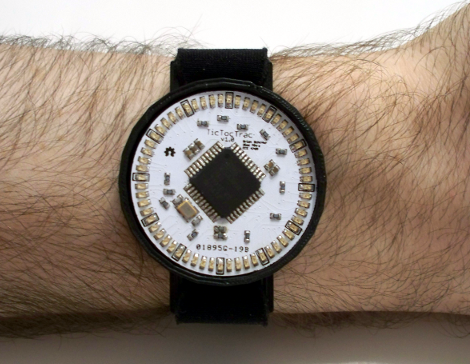
There are 2 types of people in the world; those who know binary, those who don’t, and those who know ternary. [Emanuele] thought a binary wristwatch is the pinnacle of nerd and set out to build his own. The resulting binary clock not only screams nerd as intended, but is also a functional time piece, as well.
The idea of a binary wristwatch came to [Emanuele] while he was working with PICs at school. Not wanting to let that knowledge go to waste, he used a PIC16F628 microcontroller for this build. There are four LEDs for the hours and six LEDs for the minutes, each attached to a separate microcontroller pin for easy programming.
To keep time, [Emanuele] kept the PIC in sleep mode most of the time, only waking it up when a an internal timer’s register overflows. The watch spends most of its time sleeping, sipping power from a coin cell battery with a battery life that should last weeks, at least.
The entire circuit is tucked away in a PVC enclosure with a wonderful rainbow ribbon cable band. We’re not so sure about how that feels against the skin all day, but it does exude the nerd cred [Emanuele] was looking for.

















